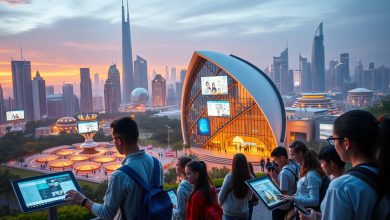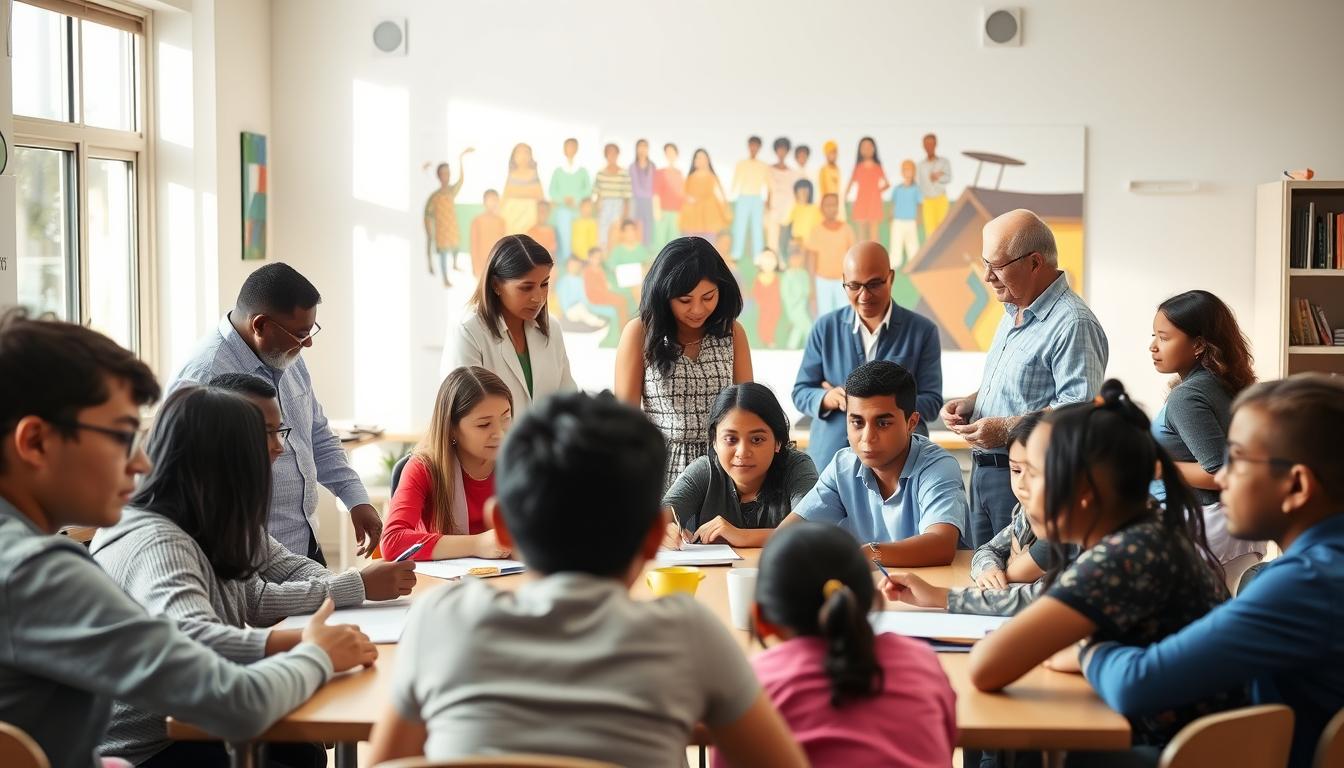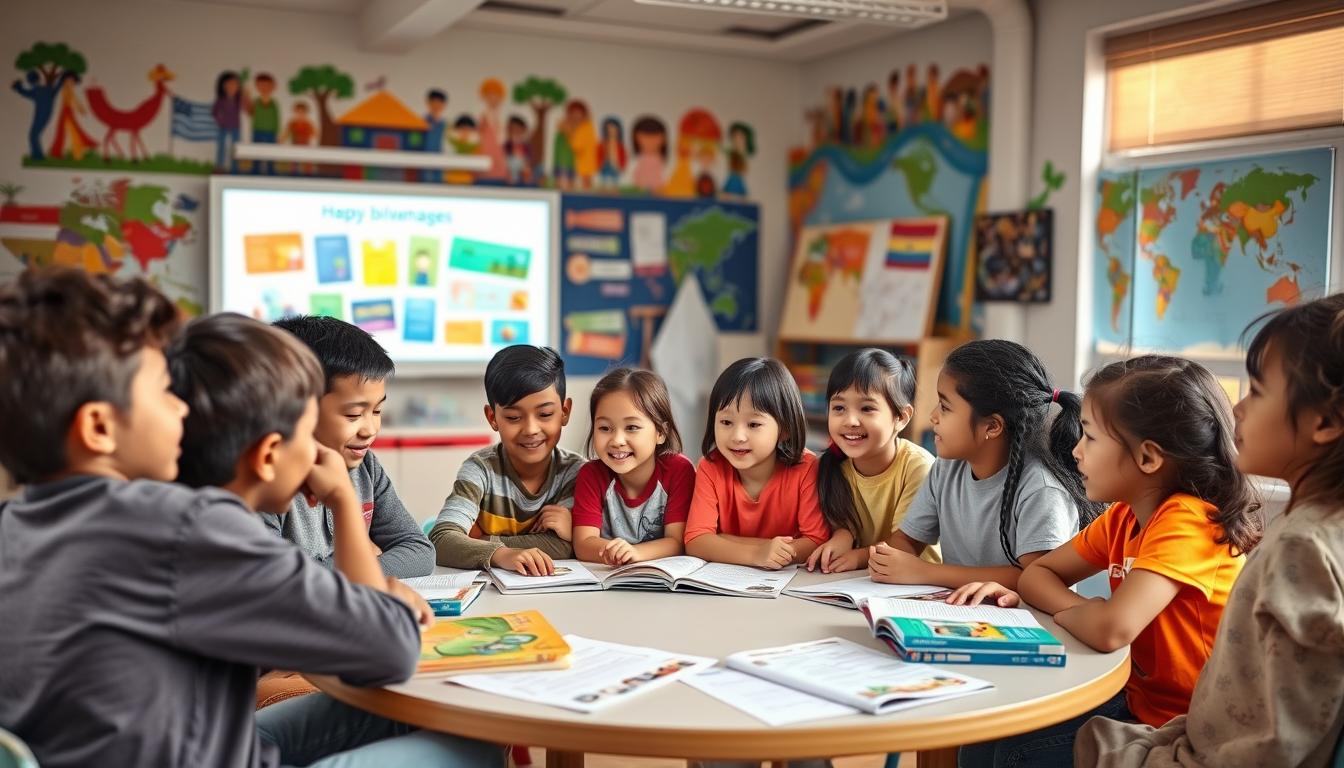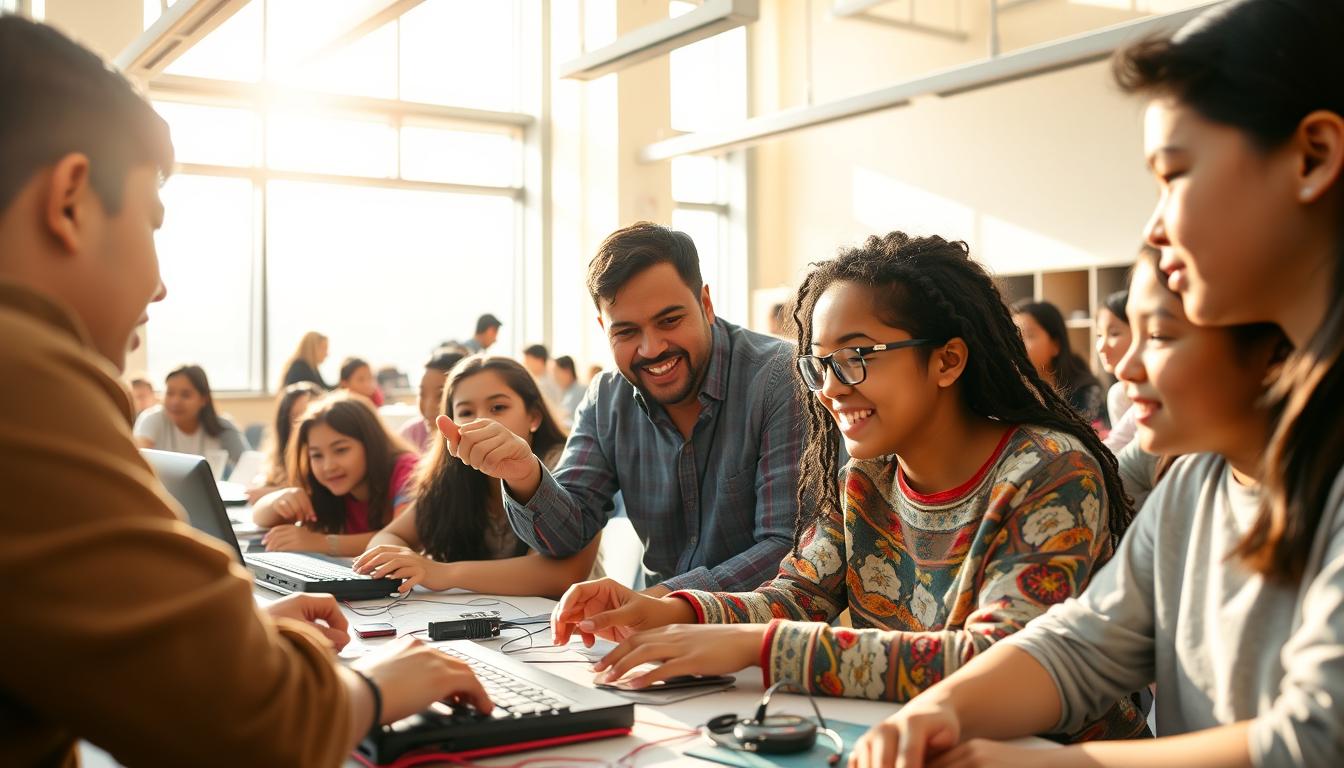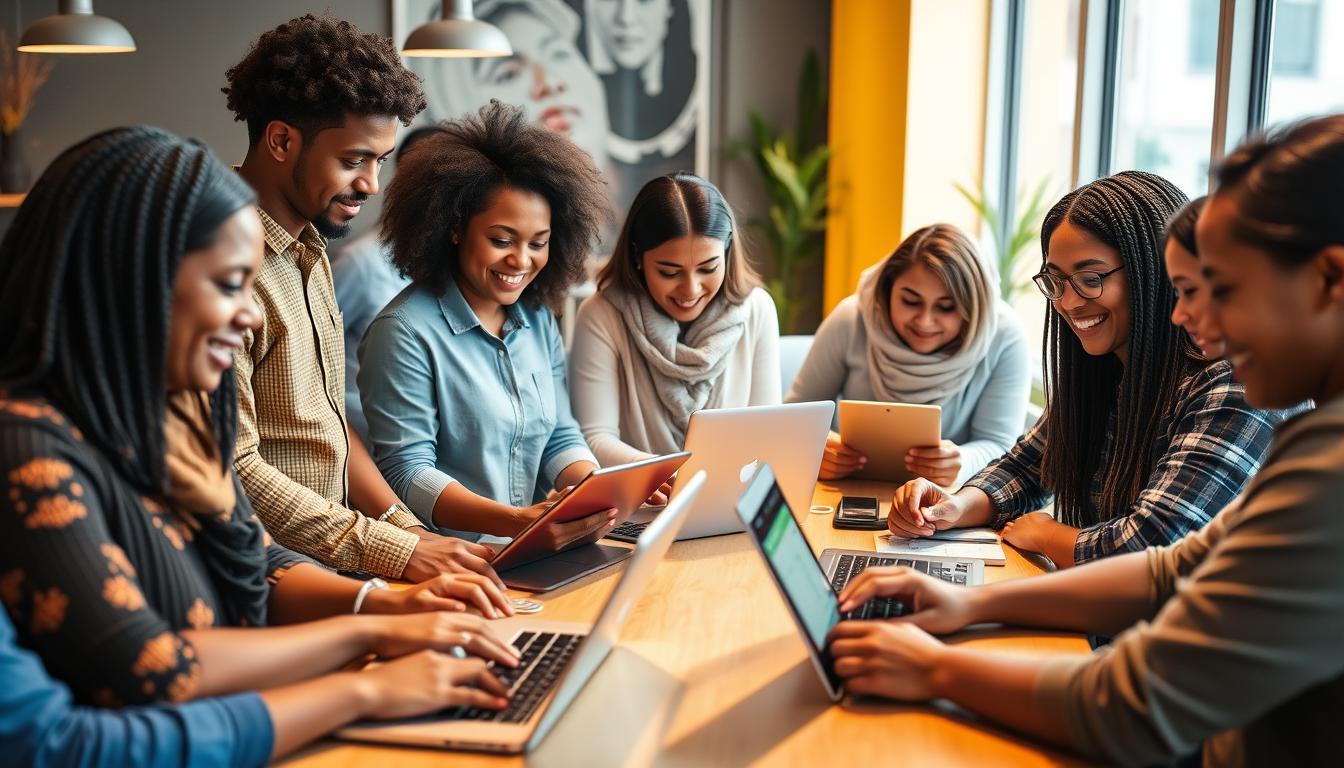Maximizing Educational Resources: A Guide for Immigrants in Developing Countries
In today’s world, immigrants in developing countries have big challenges. They need to find and use educational resources to improve their learning. This guide is here to help them find and use different learning tools and online platforms.
It shows how these resources can help them succeed in school. It also gives tips on how to use them well. By learning about these materials, immigrants can better understand how to find their way in the educational world.
Understanding the Landscape of Educational Resources
Today, many resources help learners. Knowing these options can greatly improve learning, especially for immigrants. These resources include textbooks, online courses, and digital platforms, each meeting different needs.
Types of Educational Resources Available
Many educational platforms offer unique chances for students. Some main types are:
- Textbooks: Key for basic knowledge, available in print or digital.
- Online Learning Platforms: Sites like Coursera and edX offer a wide range of courses.
- Digital Libraries: Places like Project Gutenberg have thousands of books and articles.
- Academic Tools: Apps for notes or project management make learning better.
Importance of Accessible Education
Accessible education is key for social fairness. When everyone can learn, it helps all communities. It opens doors for growth and breaks poverty cycles.
This way, everyone can succeed and society becomes more inclusive.
Barriers to Accessing Educational Resources
Even with many resources, immigrants face barriers. Common issues include:
- Socioeconomic Factors: Money can limit access to needed tools.
- Language Differences: Those who don’t speak the local language may find it hard to find content.
- Unfamiliarity with Local Systems: Newcomers find it hard to navigate without help.
Overcoming these barriers is crucial for immigrants to succeed in education.
Identifying Reliable Sources of Educational Material
Getting reliable educational material can really help immigrants learn more. There are many places to find great resources. These include online courses, local libraries, and groups focused on education.
Online Learning Platforms and Courses
Online courses have changed how we learn. Sites like Coursera, Khan Academy, and Udemy have lots of classes. You can find everything from free basics to special courses for a small fee. This makes it easy for immigrants to learn new things from home.
Libraries and Community Centers
Public libraries are key for finding educational stuff. They have computers, books, and places to study. Community centers also have programs for locals, helping people learn and connect.
Nonprofit Organizations Supporting Education
Many nonprofits help with immigrant education. Groups like the International Rescue Committee and local education groups offer scholarships and programs. They help newcomers find their way in education and get the resources they need.
Navigating Financial Aid and Scholarships
Understanding financial aid and scholarships is key for immigrants wanting to study. There are many ways to get help with school costs. You can get grants, scholarships, and low-interest loans. Knowing what’s best for you can really help.
Types of Financial Assistance Available
There are many kinds of financial aid to help with school costs:
- Grants: Given based on need and don’t need to be paid back.
- Scholarships: Money for merit, need, or special criteria like service or grades.
- Low-interest Loans: Money to borrow that’s paid back, but with good terms.
Application Processes for Scholarships
Applying for scholarships can seem hard. But with a good plan, it’s easier:
- Look for scholarships that match your goals.
- Get all needed documents, like transcripts and letters.
- Make sure to meet deadlines to avoid missing out.
- Work on your personal statement to show your strengths and dreams.
Preparing for Financial Conversations
Being ready for talks about money for school is important. Good talks can help you get more support:
- Know exactly what money you need and what you want to achieve.
- Ask for advice from mentors or financial advisors.
- Practice talking about money to feel more at ease.
Leveraging Technology for Education
Technology is key in opening up more learning chances for immigrants. Many tools and platforms help with learning in different subjects and skills. These resources help people improve their education and fit in better in their new homes.
Using Mobile Apps for Learning
Educational apps have changed how we learn. Apps like Duolingo make learning languages fun and interactive. Quizlet helps users create their own study materials. These apps are great for those who have a lot on their plate, like immigrants.
Online Forums and Study Groups
Online forums and study groups are big helps for learners. Sites like Reddit and Discord create spaces for people to meet, share, and ask questions. Being part of these groups lets immigrants work together, learn from each other, and find new resources.
Digital Libraries and Open Courseware
Digital libraries like Project Gutenberg and OpenStax have lots of free learning materials. They make it easy to get quality education without spending money. Universities also offer open courseware, letting learners explore many subjects and study whenever they want.
Community Engagement and Networking
Connecting with the community is key for immigrants’ education. Local support networks offer vital educational help and a sense of belonging. These connections help access resources tailored to immigrant challenges.
Finding Local Support Networks
Finding local support can change an immigrant’s educational path. Community groups have programs for immigrants, helping with common educational hurdles.
- Look for local community centers with workshops and support services.
- Reach out to faith-based groups for mentorship.
- Use social media to find groups for immigrant communities.
The Role of Mentorship
Mentorship is vital for success in school. Mentors offer guidance and share their experiences. They help immigrants adjust to new schools. Many organizations match mentors with mentees, making the transition easier. These programs offer learning chances and access to community resources.
Connecting with Other Immigrants
Building relationships with other immigrants is beneficial. These connections lead to learning together and sharing strategies. Joining groups and forums allows sharing of experiences and tips, improving everyone’s education.
Tailoring Educational Resources to Unique Needs
Every student is different, and their educational needs vary. We must consider language barriers, learning styles, and special needs. Customizing educational resources makes learning more engaging and effective for everyone.
Considering Language Barriers
Language barriers can block access to important educational resources. It’s vital to offer materials in many languages. Tools like translation apps and bilingual materials help improve language skills and understanding.
These resources make learning more inclusive. They help everyone feel included in the classroom.
Adapting Learning Styles
Students learn in different ways, like seeing, hearing, or doing. Recognizing these differences helps tailor educational resources. For example, visual learners might do well with pictures and videos.
Auditory learners might prefer listening to podcasts or lectures. By matching resources to learning styles, we improve educational outcomes.
Resources for Special Needs Education
Students with special needs require unique educational resources. Organizations like Understood and Disability Rights Education and Defense Fund offer help. They provide materials that fit each student’s needs, ensuring everyone can succeed.
Strategies for Overcoming Cultural Barriers
When moving to a new country, you might face cultural differences in school. It’s important to understand these differences to fit in better. Learning about different educational systems helps immigrants adjust to their new schools.
Understanding Cultural Differences in Education
Educational systems change a lot from one culture to another. Knowing these differences helps immigrants prepare for challenges in school. For example, learning about the value of participation in class can help you do well.
Emphasizing Cultural Heritage in Learning
Using your cultural background in school can make you proud and connected. Programs that celebrate different cultures help students share their stories. This makes learning richer and more inclusive for everyone.
Building Social Connections
Making friends is key to overcoming cultural barriers. Immigrants can join local groups and workshops to meet people. These activities help you find support and make friends, which is important for feeling at home.
Building a Sustainable Learning Plan
Starting a sustainable learning plan means setting clear goals. These goals act as a guide, helping you plan and stay focused. Having both short-term and long-term goals helps you move forward step by step.
Setting Educational Goals
When setting goals, think about what you want to achieve. Use the SMART criteria to make your goals clear and achievable. This way, you’ll have a clear path to reach your milestones.
Developing Time Management Skills
Good time management is key to balancing school with work and family. Immigrants with many responsibilities can use tools and methods to stay on track. Tools like prioritizing tasks and digital calendars can boost your productivity.
Continuous Assessment and Feedback
Regular assessment is crucial for learning. It gives you feedback to improve. Self-assessment helps you see how you’re doing and adjust your learning. Feedback from teachers or mentors can also help you get better, leading to ongoing success.
Conclusion: Empowering Through Education
Using educational resources brings big benefits that last a long time. For immigrants in developing countries, these benefits open doors to jobs, community involvement, and personal growth. Education helps people become strong and flexible, key skills in today’s world.
The Long-term Benefits of Education
Education empowers people and helps communities grow. It links education to social and economic progress. Educated communities see less crime and better health, improving life for everyone.
Encouraging Lifelong Learning
To succeed in a changing world, learning all your life is key. Continuous learning keeps you curious and ready for new things. It helps you face challenges, stay strong, and adapt easily. By learning all your life, you unlock your potential and inspire others.
Advocating for Educational Opportunities
Advocacy is crucial for better education for immigrants. It’s important to work for more educational chances in your community. Through workshops and partnerships, you can fight for equal learning chances. Advocacy makes education more accessible and creates a place where everyone can succeed.
FAQ
What types of educational resources are available for immigrants?
How can immigrants access financial aid for education?
Are there any community resources available to support immigrant education?
How can technology enhance the learning experience for immigrants?
What is the role of mentorship in education for immigrants?
What strategies can be used to overcome language barriers in education?
How can cultural differences affect immigrant students in education?
What steps can be taken to build a sustainable learning plan?
Can you recommend any nonprofit organizations that support immigrant education?
Published on: 5 de February de 2025

Luke Martin
Luke Martin, author of Credwallets.com, is a mathematics graduate with a specialization in financial markets. Known for his love of pets and his passion for sharing knowledge, Luke created the site to provide valuable insights into the complexities of the financial world. His approachable style and dedication to helping others make informed financial decisions make his work accessible to all, whether they're new to finance or seasoned investors.

